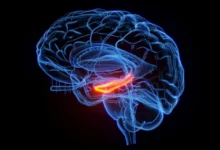New Seizure Drug Shows Promise in Reversing Autism Symptoms in Mice
Stanford Researchers Find That a Single Dose of Epilepsy Drug Z944 Reduced Sensory Sensitivity, Repetitive Behavior, and Social Withdrawal in Mice With Autism-like Traits

In a significant step forward for autism research, scientists from Stanford Medicine have made a groundbreaking discovery that could one day lead to a new form of treatment. A recent study, published in the journal Science Advances, suggests that a drug currently being trialed for epilepsy effectively reverses common autism symptoms in mice with just a single dose.
This research not only offers a new therapeutic avenue but also sheds light on the shared biological mechanisms that may link autism and epilepsy.
The Study

The study focused on the reticular thalamic nucleus (RT), a part of the brain responsible for processing sensory information. The researchers used mouse models of autism spectrum disorder (ASD), which were genetically modified with mutations in the CNTNAP2 gene, a gene strongly associated with autism.
These mice exhibited classic autism-like behaviors, including repetitive grooming, social withdrawal, hyperactivity, and an increased susceptibility to seizures. The scientists discovered that the neurons in their RT were overactive, a phenomenon linked to strong currents in what are known as T-type calcium channels.
The team then introduced Z944, also known as ulixacaltamide, a drug being studied as a potential treatment for seizure disorders. Z944 is a T-type calcium channel antagonist, meaning it works by blocking these specific currents.
The results were nothing short of remarkable. After administering just one dose of Z944, the mice showed a significant reversal of their autistic behaviors. Their repetitive grooming decreased, they became more socially interactive, and their hyperactivity was reduced.
The drug appeared to “quiet” the overactive RT region, leading to a profound change in their behavior. This finding was further validated when the researchers genetically modified the mice to have increased activity in the RT, causing the autistic behaviors to return.
This suggests that Z944’s ability to suppress this specific brain region is the key to its therapeutic effect.
The Overlap Between Autism and Epilepsy
The findings of this study provide crucial evidence for a long-suspected connection between autism and epilepsy. Autistic individuals are up to 30 times more likely to develop epilepsy than the general population. This high comorbidity has led experts to believe that the two conditions may share underlying biological mechanisms, and this new research strongly supports that theory.
The study suggests that the same overactive neural circuits and channels in the RT that contribute to autistic symptoms may also be a factor in seizure activity. This potential overlap not only explains why the conditions often coexist but also highlights a promising new target for treatment that could address both simultaneously.
While the prospect of a single-dose treatment is exciting, the researchers are quick to emphasize that these findings are still preliminary and based on animal models.
It remains unclear how these results will translate to humans. However, the study provides a critical framework for future research. The scientists note that the next steps should focus on understanding how the RT’s influence on the broader brain circuitry affects the full spectrum of ASD behaviors.
This knowledge could pave the way for highly precise, circuit-specific interventions tailored to the needs of individuals with autism. As Z944 continues its clinical trials for epilepsy, its potential as a dual-purpose drug for both epilepsy and autism remains a captivating possibility that could fundamentally change the lives of millions.
[Source]








